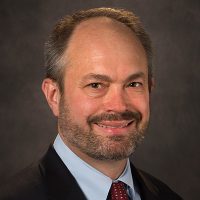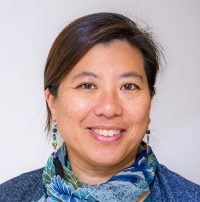This video is an excerpt from CLL Global Research Foundation’s October 2025 Virtual Town Hall featuring CLL Global President, Dr. William Wierda, and Dr. Catherine Wu of Dana-Farber Cancer Institute. Watch the full town hall replay.
Expert Panel:

Dr. William Wierda, President & CEO, CLL Global Research Foundation

Dr. Catherine Wu, Chief in the Division of Transplant and Cellular Therapy, Dana-Farber Cancer Institute

Jeff Folloder, Moderator and CLL patient advocate
Transcript:
Jeff Folloder: Dr. Wu, let’s turn to you to hear your insights.
Dr. Catherine Wu: It’s an exceptionally exciting time in terms of the choices that are available for our patients. And I think it does give us a lot of hope that patients’ disease can be controlled for long periods of time, and dare we think, for one’s life’s duration. But there’s still a lot of challenges that are faced.
And I think for that, we have to continuously think about how we can understand CLL better. So, what are the sources of relapse? Why is relapse happening? And how, and if the current drugs are not working for us, what are new options that are available? And so, I’ll just take you through. There’s kind of five points here. And what I do want to say is that there is a lot of active basic research that is going on so that we can better understand CLL. And in doing so, that is going to help us think of better therapies.
So, the first thing, Number 1 there, it’s written, “Basis of CLL Heterogeneity.” So, this is a concept that not all leukemia cells are the same. So, when patients have leukemia, there’s little different variations. And that happens because of the way that cancer arises in general. It’s also the seed for why we have resistance that develops later, because there’s so much variation.
We hope that our medications can kind of get rid of every single cell. But if there’s one that escapes, then that’s the source of relapse. So, we have to understand a little bit better why heterogeneity happens. What are the characteristics of those escaping cells? And the good news for all of us is that we have better tools than ever that allow us to directly profile and analyze patient leukemia cells.
We can profile their DNA, we can profile their RNA, we can look at their proteins, we can look at all the peptides that are displayed on their surface. So, we are not only in the age of immense drug development, like Dr. Wierda just said, but we are also in the age of human biology, where we have the tools that can really crack these sorts of secrets open. So, that’s number 1, Basis of Heterogeneity.
Number 2, what got us there to begin with? So, how did a normal B cell actually turn into a CLL cell? What were the steps that kind of took place, if we kind of do a little bit of archaeology, that got us to the CLL? Other than an academic interest, I think the reason why that’s important is because if we can get to dealing with the problem earlier, then maybe we can change the natural history of disease. Maybe we can even prevent full-throttle CLL from happening if we understood where were the levers, where were the areas that we could actually intervene.
Number 3, Nature of Immunodeficiency in CLL. We all know that CLL comes with its risks of immune dysfunction, but just knowing about it, we need to know more. So, what exactly is the nature of that immune dysfunction? How much of those changes are permanent? How many are temporary? So, if we use the drugs that Dr. Wierda talked about, and we actually get the disease under control, are there still areas of the immune system that’s dysfunctional that we can’t change? How much of it is temporary, and how much of it is permanent? How much can we modify? What can we replace? How can we restore immune health? This is something that Dr. Wierda and I talk a lot about.
Number 4, Defining Key Pathways of Disease. So, we’re doing wonderfully with the drugs that we have, but for sure, there are other important pathways that are out there that – it just broadens our toolkit if we understand a little bit more about what are the other possible therapeutic avenues that can be developed.
Finally, one thing that has been concerning for all of us is Richter’s transformation. That is, at some level, a manifestation of resistance. This is, as this group knows, a very difficult, to treat, situation. So, again, can we understand why that happened? Can we understand what were the seeds that got one to Richter’s transformation? What can we do about it? What are the right pathways to get at? What are the right combination of drugs to go after?
So, I think that we’re at an exciting time because these are the questions we have to answer. But better than ever, we have tools that allow us to attack each of these areas. My other slide is just to say that I think for us, one can say, our goal is precision oncology. We want to make sure that therapy is personalized for the individual, that it’s going to be effective; that it’s going to minimize any sort of toxicity.
So, we’re doing great right now, but to fully realize that vision, there’s still a lot we have to do. So, this is just a schematic. How do we cross that bridge? Certainly, I mentioned some of the things that we’re hoping to understand, but I do think that in the future, there’ll be a moment where we have what we call molecular taxonomy of CLL. So, that’s really precisely knowing on a per-individual basis, what are the characteristics?
Can we kind of look in the crystal ball? Can we understand what is the right combination for that individual given the characteristics of the CLL that you have? I would love to figure out ways that we can understand how we can, at an early point in disease, intervene and prevent any toxicities or side effects that might happen down the road.
And all of these different aspects require, as everyone can imagine, funding because we need support for that for the discovery science; collaboration because we always get more out of increasing interactions and access to data and being able to pull it all together, systems that help us integrate all that information.
And then, again, like Dr. Wu said, all these important practice-changing clinical trials that are going to make a difference for our patients. So, I’ll end there.
Jeff Folloder: Thank you. Dr. Wu, I know that you’re involved in ongoing CLL research. Since we’re in the middle of the Major League Baseball playoffs, I’m going to ask you for a little inside baseball information. Is there anything that you’d like to share with us that you’re working on?
Dr. Catherine Wu: Let’s see. Well, I think that myself, personally. I think that we are – one of the things that really excites me is the tools that we have that allow us to dissect that heterogeneity, like I said. So, looking at each cell one by one, not only that, but we can look at cells now kind of in a spatial configuration. So, we can look at how different normal and leukemia cells are interacting in lymph nodes or in bone marrow.
And I think we’re going to get a lot of clues and answers from those types of analyses. And I’m excited about really understanding from these exciting trials that are effective in patients, but also in patients who develop resistance, what the differences are. So, how can we understand what are those troublemaker cells that are still there are, even despite the best therapies that we have? And if we could figure out what the troublemakers are doing, then we would know what to go after and think about better combinations.
Jeff Folloder: I love that term, “troublemakers.” I would love to refer to my cells as troublemakers and make sure that they just go away. Dr. Wierda, before we move on to our audience questions, are there any additional updates from you that you’d like to share?
Dr. William Wierda: Sorry, not necessarily anything specific to add. And I think I reflected my excitement about all of the new treatments that we’ve been able to work on and the progress that we’re seeing. I have said this before, and I continue, and it becomes even more apparent to me that we are on the brink of developing curative therapy for most of our patients with CLL. We are having more and more discussions about, well, what does a cure look like? Is there this functional cure? Or how would one define cure? And I think that’s a more and more relevant topic and something that we’re working towards, and I think approaching for most of our patients.
Jeff Folloder: I love hearing that four-letter word, cure. At the beginning of the program, we talked about getting rid of chemo. Now we’re hinting at the word cure. It makes my day. Thank you both.

